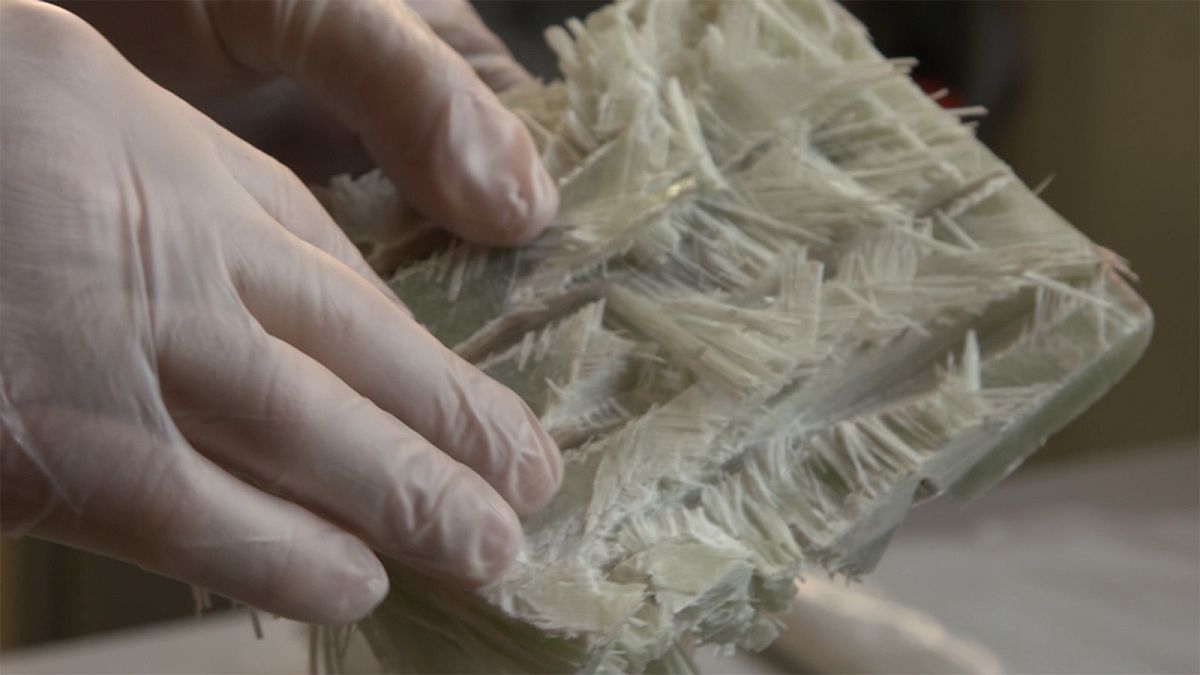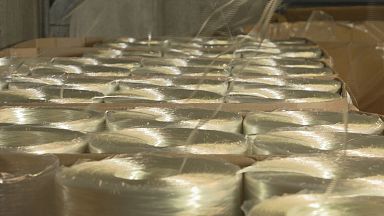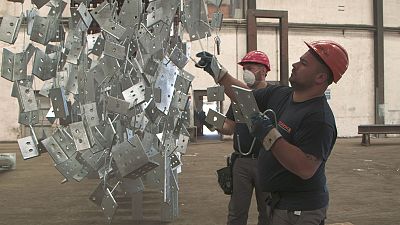Futuris travels to northern Italy to meet the European researchers developing better ways to recycle composite materials such as carbon and glass fibre.
From 2025, some 80,000 tons of glassfiber composites will have to be recycled every year in Europe. In this episode of Futuris Julian Lopez Gomez goes to northern Italy to see how researchers are trying to reuse such waste material in sustainable and cost-efficient ways.
They are strong, versatile and everywhere around us, but composite materials like carbon and glassfiber are also extremely difficult and costly to recycle. Scientists working on a European research project called FiberEUse may have come up with a solution. They have developed a prototype which is able to grind fiber-reinforced polymer composites that were once used to make wind turbines.
"Our main challenge is to control the whole process," says Nicoletta Picone, an environmental engineer from the Italian National Research Institute. She goes on to explain, "We need to carefully set up the equipment to optimise the production of the final product so that it can be easily reused. But we also need to closely monitor the whole process from an energy point of view. We have to set up all the equipment so it's as energy efficient as possible, to reduce the consumption of both energy and the different tools which we need to use throughout the different mechanical processes."
The company Rivierasca in northern Italy produces around 4.5 million square metres of roof sheeting every year. The firm uses recycled glassfiber to produce building materials. While recycled glassfiber has slightly less resistant mechanical properties than ordinary glassfiber, Giacomo Bonaiti, Rivierasca's CEO, says there are ways to strengthen it.
"The technology that we have developed allows us to add new glassfiber to the manufacturing process, so we are able to somehow catch up and compensate that eventual lack of resilience in recycled glassfiber. But then of course everything depends on what kind of product you are actually manufacturing. A table made of glassfiber does not to have the same requirements as a roof sheet exposed to the wind, for instance."
Future applications
The latest tests by the FiberEUse project aim to increase the amount of composite materials that are currently recycled. Researchers say some of their ideas are already starting to be used in sectors like the car industry.
"A number of German companies are already designing new auto spare parts built with this composite waste. They should be easily fixable and detachable from the cars, and then they can be immediately assembled again. This allows, not only to recover the material, but also to re-use it in its original function."
In the future it is hoped other potential applications could include materials for the furniture, aerospace, leisure, sport and design industries.





